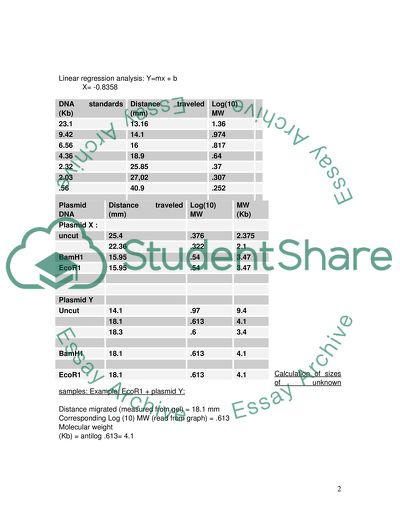Restriction and Gel Electrophoresis of Plasmid DNA Lab Report. Retrieved from https://studentshare.org/biology/1560426-practical-report-in-molecular-biology
Restriction and Gel Electrophoresis of Plasmid DNA Lab Report. https://studentshare.org/biology/1560426-practical-report-in-molecular-biology.


